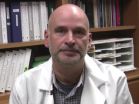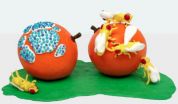(Press-News.org) COLUMBIA, Mo. -- Each year, about 610,000 Americans suffer their first heart attack, according to the Centers for Disease Control and Prevention. Heart attacks and other symptoms of cardiovascular disease can be caused when blockage occurs in the arteries. In a new study from the University of Missouri, a scientist has discovered a natural defense against arterial blockage: bilirubin.
Bilirubin is typically something parents of newborns hear about when their children are diagnosed with jaundice. Generated during the body's process to recycle worn-out red blood cells, bilirubin is metabolized by the liver and, usually, leaves the body harmlessly. (Many babies' livers are not developed enough to metabolize the bilirubin, which results in the infants being diagnosed with jaundice, or high levels of bilirubin in their systems.) Now MU scientists have found that bilirubin can be used to inhibit the clogging of arteries, and thus prevent the deadly consequences, often experienced by individuals with cardiovascular disease.
"Bilirubin is generated daily in the human body, but it's not a waste product; it has important functions, including being an antioxidant," said William Durante, professor of medical pharmacology and physiology and lead author on the study. "What we found in our study is that bilirubin can prevent or limit the damage that occurs to blood vessels in individuals who have, or are at risk for, cardiovascular diseases, such as atherosclerosis."
VIDEO:
In a new study from the University of Missouri, a scientist has discovered a natural defense against arterial blockage: bilirubin.
Click here for more information.
When arteries are damaged, smooth muscle cells in blood vessels become activated and grow at the injury sites creating lesions inside the arteries. These, lesions can block the flow of blood in arteries of the heart leading to chest pains or deadly heart attacks, Durante said. Arterial lesions can occur due to genetics or because of bad lifestyle choices such as a lack of exercise, unhealthy diet or smoking.
"We found that bilirubin could limit the size of arterial lesions by blocking the growth of vascular smooth muscle cells" Durante said. "Importantly, bilirubin inhibits cell growth without causing cell death, an undesirable side effect of drugs. Cell death creates cellular debris in the arterial network and leads to inflammation and possible rupture of the lesions resulting in even bigger clinical problems."
However, Durante said that bilirubin is a challenge to use because it is not easily dissolved in water and is rapidly metabolized by the liver when taken orally.
"One possibility is to coat stents — which doctors insert into arteries to keep blood vessels open once the blockage has been cleared — with the bilirubin," Durante said. "When the stents are inserted into the arteries, bilirubin will keep smooth muscle cells from growing and blocking the stent. Surgeons also could coat bilirubin onto blood vessels that are used in bypass surgery."
Durante said that further studies are needed before this technique can be tested in humans. Durante's study was published in Frontiers in Pharmacology. The early-stage results of this research are promising. If additional studies, including animal studies, are successful within the next few years, MU officials would request authority from the federal government to begin human drug development (this is commonly referred to as the "investigative new drug" status). After this status has been granted, researchers may conduct human clinical trials with the hope of developing new treatments.
INFORMATION:
Bilirubin can prevent damage from cardiovascular disease
2012-12-06
ELSE PRESS RELEASES FROM THIS DATE:
OHSU study shows that a molecule critical to nerve cells increases drammatically during hypertension
2012-12-06
Researchers at Oregon Health & Science University's School of Dentistry have made an important connection between a molecule critical to nerve cells and high blood pressure. Production of the molecule Brain-Derived Neurotrophic Factor (BDNF) appears to increase dramatically in blood pressure-sensing nerve cells during hypertension. The study, published online in the Journal of Neuroscience Research, may someday have implications for the prevention and treatment of high blood pressure, which affects about one in three adults in the United States.
BDNF is essential to ...
Protein controlling glucose metabolism also a tumor suppressor
2012-12-06
A protein known to regulate how cells process glucose also appears to be a tumor suppressor, adding to the potential that therapies directed at cellular metabolism may help suppress tumor growth. In their report in the Dec. 7 issue of Cell, a multi-institutional research team describes finding that cells lacking the enzyme SIRT6, which controls how cells process glucose, quickly become cancerous. They also found evidence that uncontrolled glycolysis, a stage in normal glucose metabolism, may drive tumor formation in the absence of SIRT6 and that suppressing glycolysis ...
European Romani exodus began 1,500 years ago, DNA evidence shows
2012-12-06
Despite their modern-day diversity of language, lifestyle, and religion, Europe's widespread Romani population shares a common, if complex, past. It all began in northwestern India about 1,500 years ago, according to a study reported on December 6th in Current Biology, a Cell Press publication, that offers the first genome-wide perspective on Romani origins and demographic history.
The Romani represent the largest minority group in Europe, consisting of approximately 11 million people. That means the size of the Romani population rivals that of several European countries, ...
At high altitude, carbs are the fuel of choice
2012-12-06
Mice living in the high-altitude, oxygen-starved environment of the Andean mountains survive those harsh conditions by fueling their muscles with carbohydrates. The findings, reported online on December 6 in Current Biology, a Cell Press publication, provide the first compelling evidence of a clear difference in energy metabolism between high- and low-altitude native mammals.
"The high-altitude mice we examined in this study are a rare exception to a general exercise fuel use pattern seen in lowland mammals," said Marie-Pierre Schippers of McMaster University. "Studying ...
Disgust circuit: Flies sniff out and avoid spoiled food
2012-12-06
VIDEO:
The ability to detect rotten food is so crucial for survival that even flies have a dedicated neural circuit to do just that, according to a study published on December...
Click here for more information.
The ability to detect rotten food is so crucial for survival that even flies have a dedicated neural circuit to do just that, according to a study published on December 6th in the Cell Press journal Cell. The brain circuit allows flies to avoid feeding and laying ...
Mexican paradox: While opinion surveys overestimate abortions 10-fold, abortion mortality clearly decreases
2012-12-06
This press release is available in Spanish and French. A collaborative study conducted in Mexico by researchers from the West Virginia University-Charleston (US), Universidad Popular Autónoma del Estado de Puebla (México), Universidad de Chile and the Institute of Molecular Epidemiology of the Universidad Católica de la Santísima Concepción (Chile), revealed that opinion surveys used by researchers from the Guttmacher Institute overestimated figures of induced abortion in the Federal District of Mexico (Mexico DF) up to 10-fold. The research recently published in the International ...
A direct line through the brain to avoid rotten food -- a full STOP signal for Drosophila
2012-12-06
VIDEO:
Bill Hansson and Marcus Stensmyr explain their results now published in CELL.
Click here for more information.
Consuming putrid food can be lethal as it allows bacterial pathogens to enter the digestive system. To detect signs of decay and thus allowing us and other animals to avoid such food poisoning is one of the main tasks of the sense of smell. Behavioral scientists and neurobiologists at the Max Planck Institute for Chemical Ecology in Jena, Germany, have ...
Scientists identify molecules in the ear that convert sound into brain signals
2012-12-06
LA JOLLA, CA – December 6, 2012 – For scientists who study the genetics of hearing and deafness, finding the exact genetic machinery in the inner ear that responds to sound waves and converts them into electrical impulses, the language of the brain, has been something of a holy grail.
Now this quest has come to fruition. Scientists at The Scripps Research Institute (TSRI) in La Jolla, CA, have identified a critical component of this ear-to-brain conversion—a protein called TMHS. This protein is a component of the so-called mechanotransduction channels in the ear, which ...
Flexible silicon solar-cell fabrics may soon become possible
2012-12-06
For the first time, a silicon-based optical fiber with solar-cell capabilities has been developed that has been shown to be scalable to many meters in length. The research opens the door to the possibility of weaving together solar-cell silicon wires to create flexible, curved, or twisted solar fabrics. The findings by an international team of chemists, physicists, and engineers, led by John Badding, a professor of chemistry at Penn State University, will be posted by the journal Advanced Materials in an early online edition on 6 December 2012 and will be published on a ...
Hubble sees a galaxy hit a bullseye
2012-12-06
In Hubble's image, NGC 922 clearly reveals itself not to be a normal spiral galaxy. The spiral arms are disrupted, a stream of stars extends out towards the top of the image, and a bright ring of nebulae encircles the core. Observing with NASA's Chandra X-ray Observatory reveals more chaos in the form of ultraluminous X-ray sources dotted around the galaxy.
NGC 922's current unusual form is a result of a cosmic bullseye millions of years ago. A smaller galaxy, catalogued as 2MASXI J0224301-244443, plunged right through the heart of NGC 922 and shot out the other side. ...





